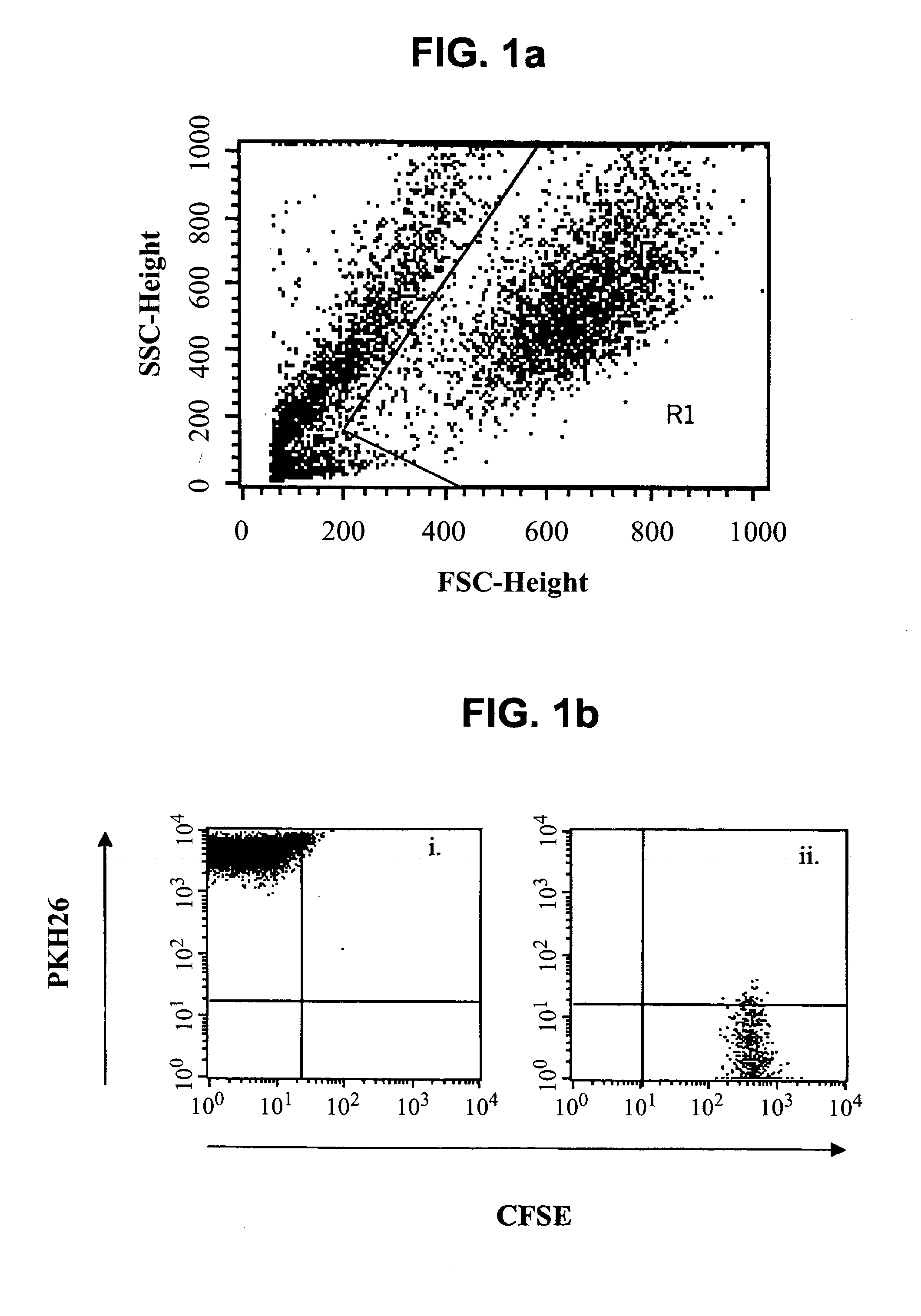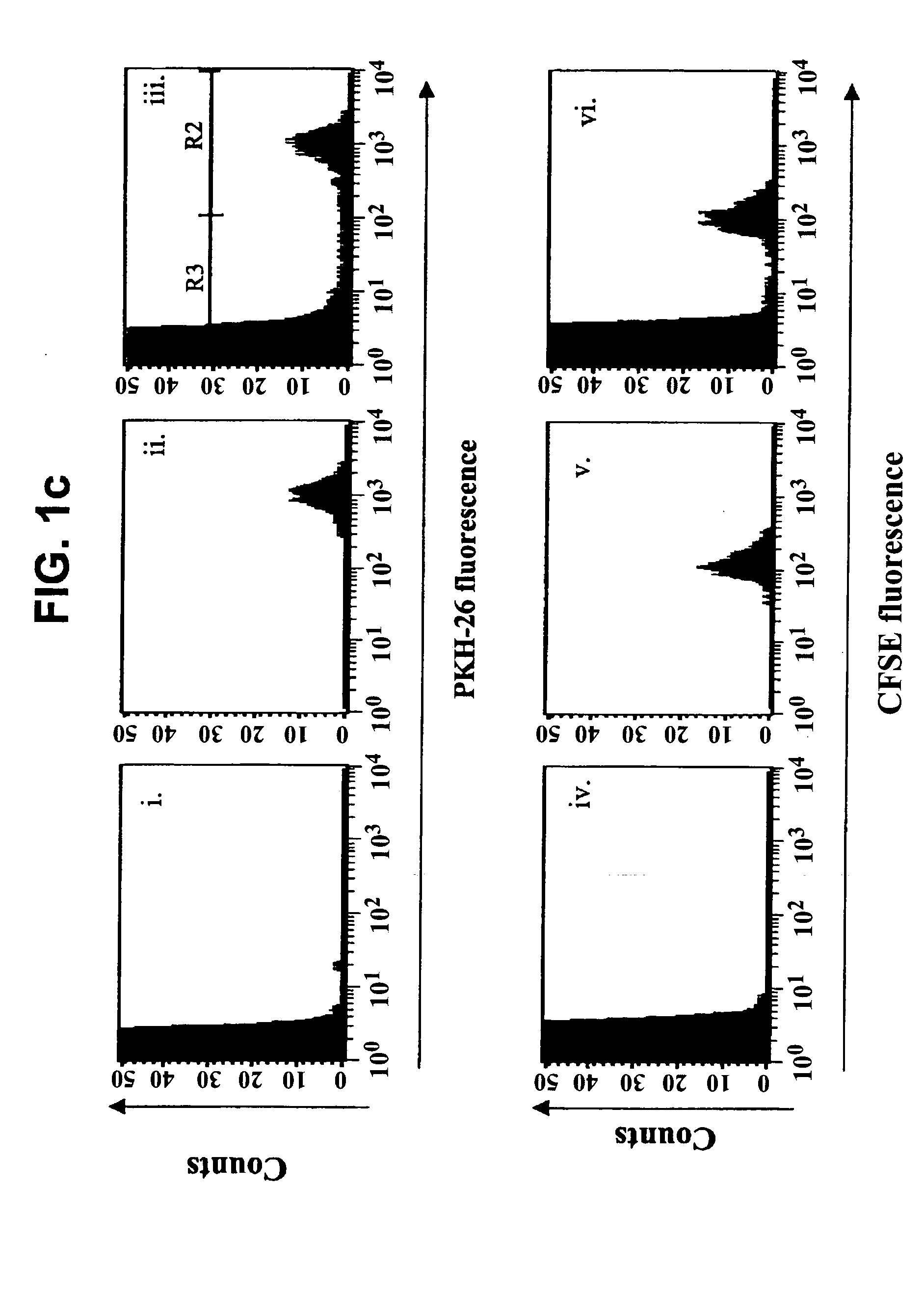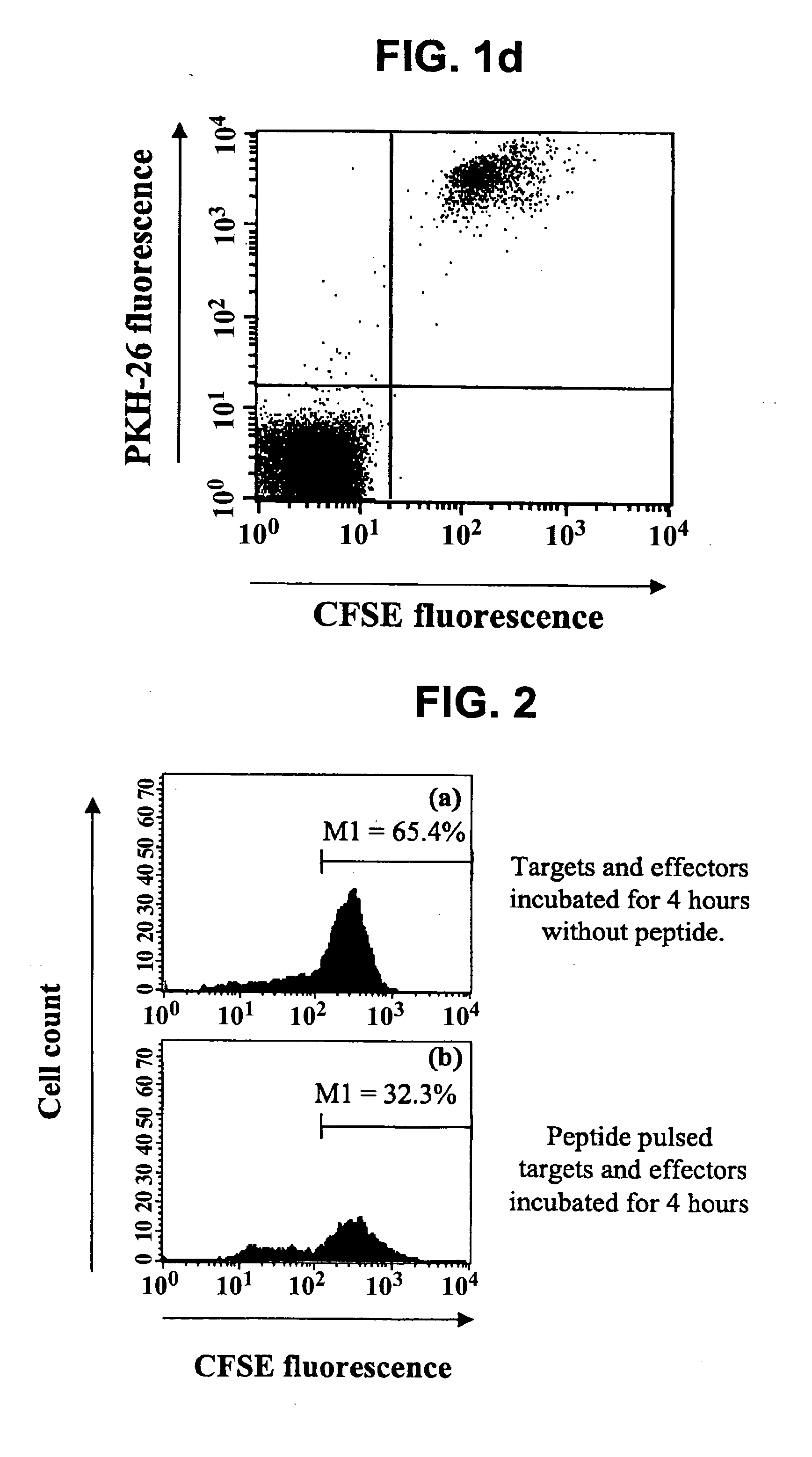Methods of detecting specific cell lysis
a specific cell and lysis technology, applied in the field of cell lysis, can solve the problems of low sensitivity, health risks associated with gamma irradiation, and poorly proposed fluorochrome target cell detection
- Summary
- Abstract
- Description
- Claims
- Application Information
AI Technical Summary
Problems solved by technology
Method used
Image
Examples
example 1
Antigen-Specific Lysis of Target Cells Labeled with PKH-26 and CFSE
[0158] This example describes an assay termed “fluorometric assessment of T lymphocyte antigen-specific lysis” or FATAL, and compares this assay to the 51Cr release assay.
[0159] Materials and Methods
[0160] Generation of Effector Cells
[0161] To evaluate antigen specific CD8+ T-cell effector activity, cytomegalovirus (CMV) specific CTLs were used as effector cells and B-lymphoblastoid cell lines (BCL) as target cells. Several CMV-pp65 peptide (495-503: NLVPMVATV; SEQ ID NO:1) specific semi-clones from an HLA-A*0201, CMV seropositive donor were generated as previously described (Wills et al. (1996) J. Virol. 70:7569-7579).
[0162] Preparation of Target Cell Populations
[0163] BCL were used as target cells in both the 51 Cr release and FATAL assays. Both assays were performed with immortalized BCL from an HLA-A*0201 individual. The BCL were incubated with 10 μg / ml of the HLA-A*0201 restricted cytomegalovirus (CMV)-pp6...
example 2
Antigen-Specific Lysis of Dual Target Cells Labeled with PKH-26 or DiD and CFSE
[0184] This example describes an assay termed “Dual Target assay”.
[0185] Materials and Methods
[0186] Generation of Effector Cells
[0187] To evaluate antigen specific CD8+ T-cell effector activity, Influenza matrix protein-specific CTLs were used as effector cells and B-lymphoblastoid cell lines (BCL) as target cells. Several influenza HLA A*0201 peptide (GILGFVFTL SEQ ID NO:3) specific semi-clones from an HLA-A*0201, donor were generated as previously described (Wills et al. (1996) J. Virol. 70:7569-7579).
[0188] Preparation of Target Cell Populations
[0189] The dual target assay was performed using the same autologous immortalized BCL from an HLA-A*0201 individual. The BCL were incubated with 10 μg / ml of the HLA-A*0201 restricted influenza HLA A*0201 peptide (GILGFVFTL SEQ ID NO:3) peptide for 1 hour at 37° C. in 5% CO2 prior to use in the assays. In addition, target BCL were incubated without peptide...
PUM
| Property | Measurement | Unit |
|---|---|---|
| wavelengths | aaaaa | aaaaa |
| wavelengths | aaaaa | aaaaa |
| wavelengths | aaaaa | aaaaa |
Abstract
Description
Claims
Application Information
 Login to View More
Login to View More - R&D
- Intellectual Property
- Life Sciences
- Materials
- Tech Scout
- Unparalleled Data Quality
- Higher Quality Content
- 60% Fewer Hallucinations
Browse by: Latest US Patents, China's latest patents, Technical Efficacy Thesaurus, Application Domain, Technology Topic, Popular Technical Reports.
© 2025 PatSnap. All rights reserved.Legal|Privacy policy|Modern Slavery Act Transparency Statement|Sitemap|About US| Contact US: help@patsnap.com



